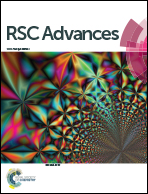NaB integrated graphene oxide membranes for enhanced cell viability and stem cell properties of human adipose stem cells
Abstract
Here we present the integration of boron (NaB) with graphene oxide (GO) to develop a new class of membranes which are biocompatible and cost-effective for cell and tissue culture studies. Ethanol (EtOH) assisted the uniform dispersion of GO flakes on top of a glass substrate. We investigated the effect of a GO + NaB membrane on the growth and proliferation of hASCs. hASCs showed better cell viability on NaB integrated GO membranes compared to their respective controls. The concentrations of NaB and GO are 0.02% and 1/20 of stock (0.024%) respectively. To our knowledge this is the first time that enhanced cell proliferation and attachment ability of hASCs with NaB integrated GO membranes has been observed. Our study provides a platform for the development of 3D-GO scaffold systems combined with NaB in tissue engineering.


 Please wait while we load your content...
Please wait while we load your content...